Real-time monitoring of faecally contaminated drinking water
Tryptophan-like fluorescence (TLF) represents an approach to instantaneously assess microbial risks in drinking water.
04/12/2020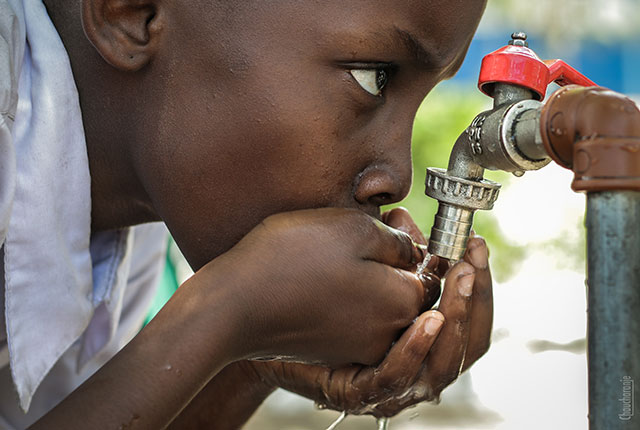
Globally, two billion people consume water contaminated with faeces1. This exposure increases the incidence of infectious disease such as diarrhoea, which alone results in more than half a million deaths per year in low- and middle-income countries2. The most at-risk age group is children under five, with diarrhoea the second leading cause of death3. In higher-income countries, risks remain due to the consumption of undertreated water from private supplies, or in public supplies, from failures in either water treatment or the integrity of the distribution network.
To help address these issues, scientists at the BGS have led a number of studies to assess the microbiological quality of drinking water supplies4,5. Recent BGS sensor research has focused on on-site testing using portable tryptophan-like fluorescence (TLF) sensors that require no reagents and provide instantaneous readings. While not a substitute for standard culturing methods, TLF sensors have the potential to be used for real-time microbial risk screening of drinking water supplies.
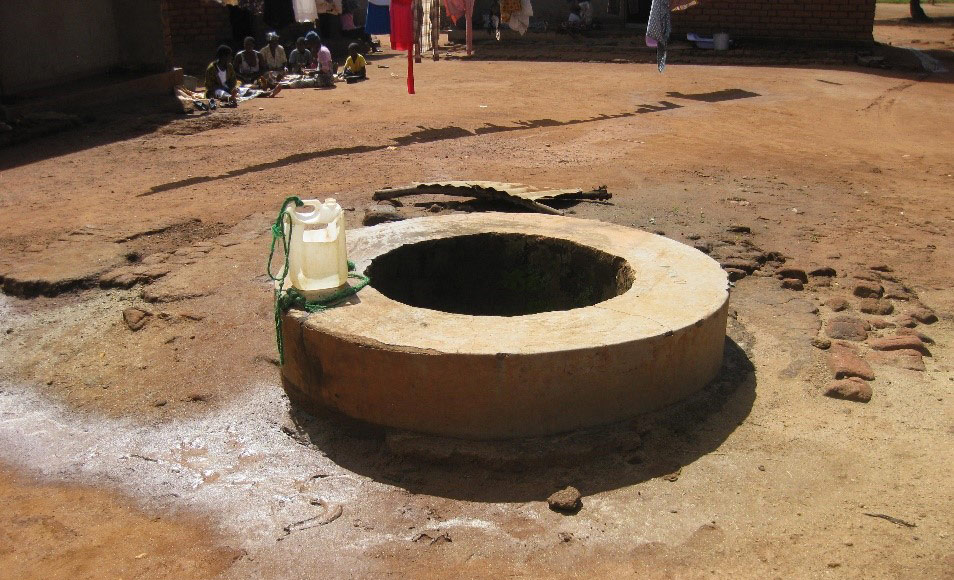
Shallow well used for drinking water supply in Malawi. BGS © UKRI.
These sensors measure the fluorescence that is associated with the amino acid tryptophan, termed TLF. A measurement is obtained by either submerging a sensor in a water sample or using a small sample container that fits into the sensor, with results available in 60 seconds. A flow-through cell is used for online applications and all approaches require no reagents or other consumables.
How can groundwater become contaminated by faecal organisms?
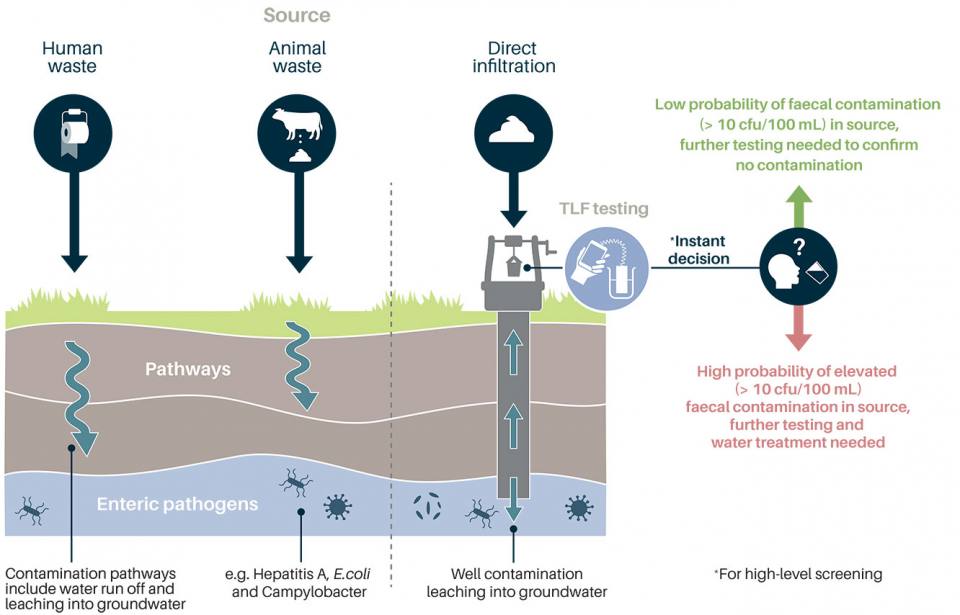
Drinking water supplies have the potential to become contaminated by various sources of waste, including enteric (gut) pathogens from human and animal faeces. TLF testing can be used as an initial screening tool to inform and complement further water quality investigations. BGS © UKRI.
Traditional testing approach
Faecal contamination in drinking water can be detected using faecal indicator organisms (FIOs), such as E. coli. This approach requires working with sterile equipment and reagents. Testing can take up to a day to return results due to the necessity of culturing. However, in lower- and middle-income countries, these requirements can restrict water-quality monitoring. Delays resulting from FIO methods also limit the ability to rapidly communicate the risks to local communities. As a result, UNICEF and the World Health Organisation (WHO) are looking for new technologies for the rapid detection of E. coli.
Results
The primary aim of the BGS research has been to evaluate how useful and reliable TLF is for assessing faecal contamination through relationships with FIOs in groundwater. We have demonstrated:
- TLF is a more precautionary indicator of microbial risk than FIOs since TLF is more stable and mobile in groundwater than FIOs.
- The TLF signal in groundwater is predominantly derived from extracellular material in groundwater not cellular material
- TLF can be used as a high-level screening, real-time indicator of FIOs in drinking water. This has been demonstrated in case studies in Zambia, Kenya, Malawi, UK and India using both snapshot surveys and in-line raw water applications (UK). TLF has also been shown to vary seasonally in studies in Zambia, UK and Malawi.
- Identified limitations include a limit of detection of 10 cfu/100 mL, when comparing with the traditional measurement of FIOs. However, it may not be appropriate to compare TLF directly to FIOs because TLF is a broader indicator of environmental conditions, rather than directly related to FIOs and acute public health risk.
- Both FIO methods and TLF are sensitive to user contamination. For TLF, using a small sample container that fits in to the TLF sensor would be the best approach for wider use, such as by public health professionals, to minimise the risks of cross-contamination. Training on TLF protocols to minimise user contamination is needed to collect reliable data.
Benefits and limitations of TLF testing regimes
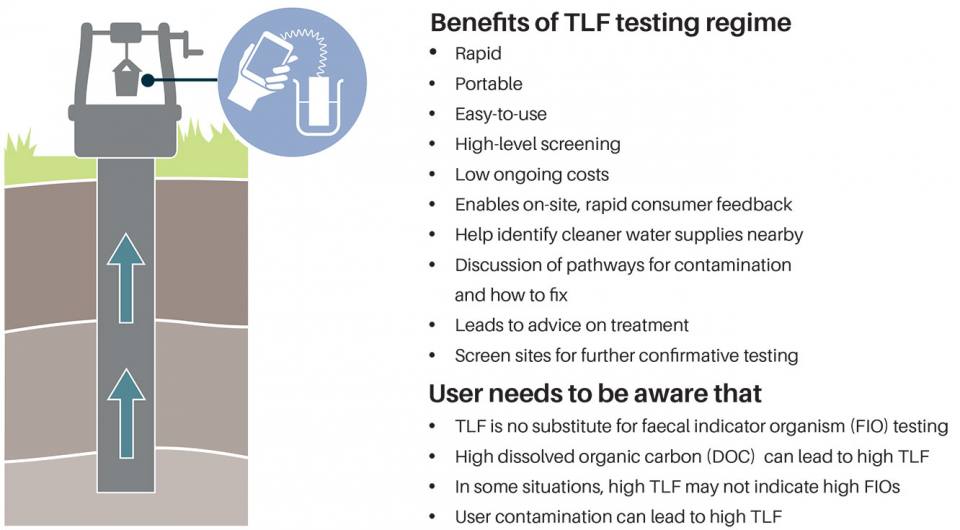
TLF testing offers a rapid, portable, easy-to-use method of undertaking high-level screening of water supplies and identifying higher risk sites for further investigation. BGS © UKRI.
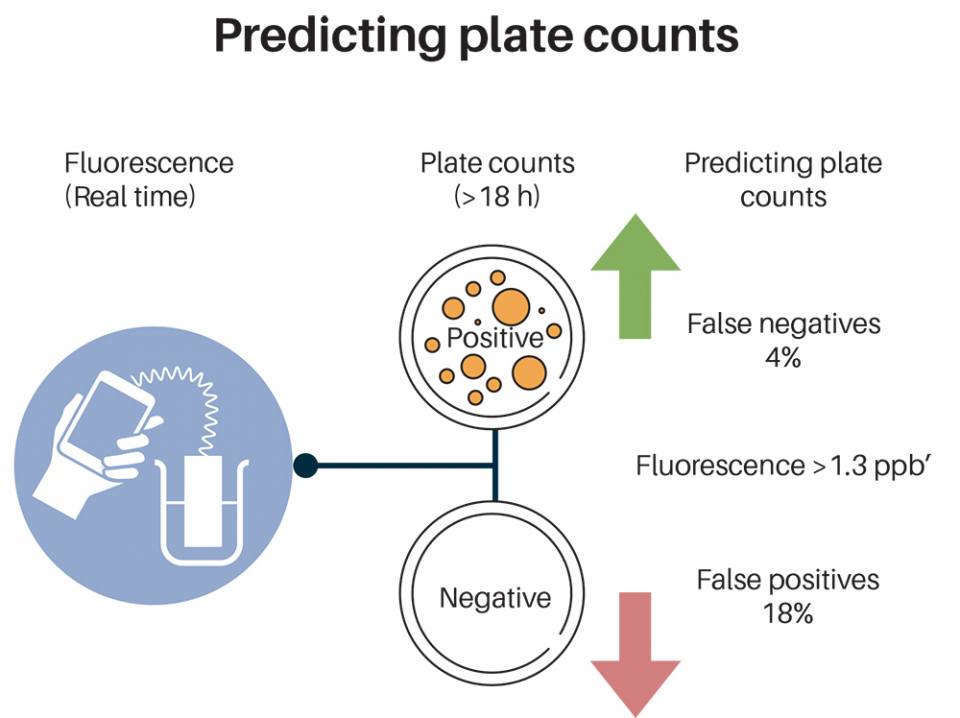
Predicting plate counts based on pooled data from a number of studies reported in Sorensen et al. (2018a). However, recent studies have shown that thresholds are dependent on sample size, study area and instrument sensitivity (Nowicki et al., 2019; Ward et al., 2020b) so applying thresholds from other studies may not be appropriate in a new study area. BGS © UKRI.
Addressing the United Nations Sustainable Development Goals
This research makes progress to meet the UNs Sustainable Development Goals:
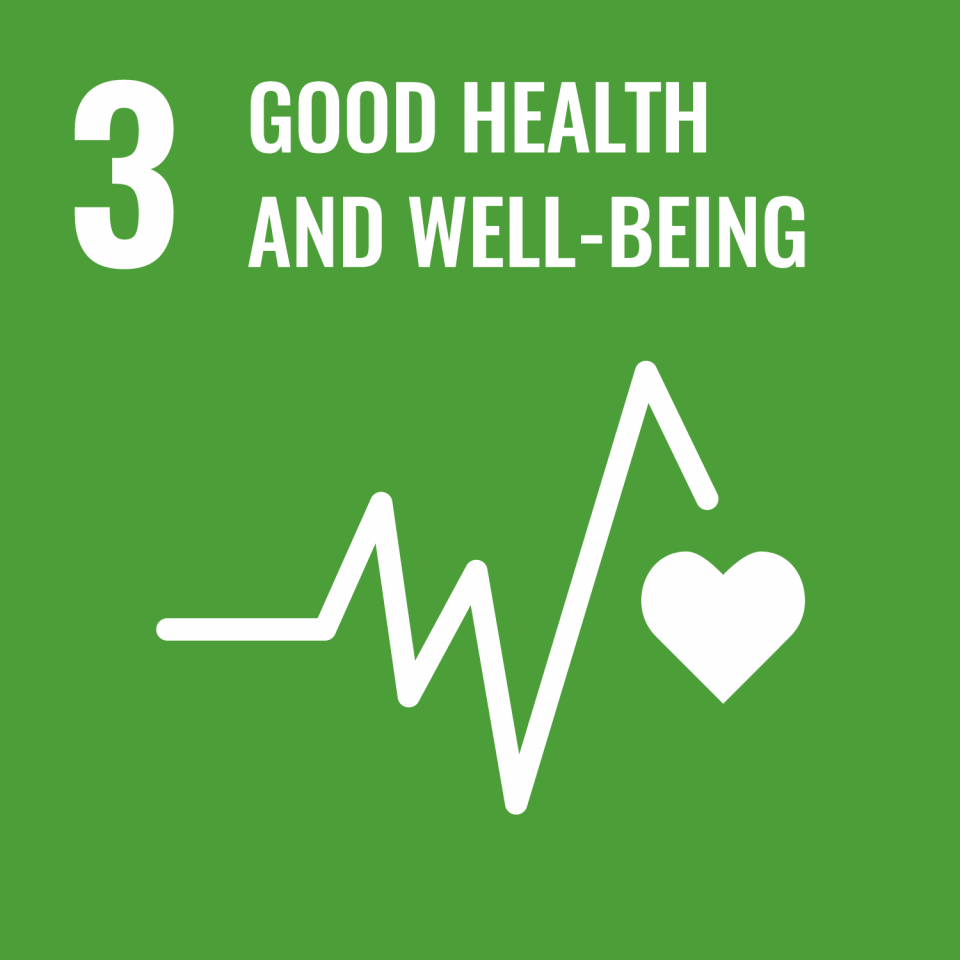
Goal 3: ensure healthy lives and promote well-being for all at all ages.
Target 3.9: ‘By 2030, substantially reduce the number of deaths and illnesses from hazardous chemicals and air, water and soil pollution and contamination.’ In adequate and unsafe drinking water, sanitation and hygiene is linked to 60 per cent of the disease burden from diarrhoea.
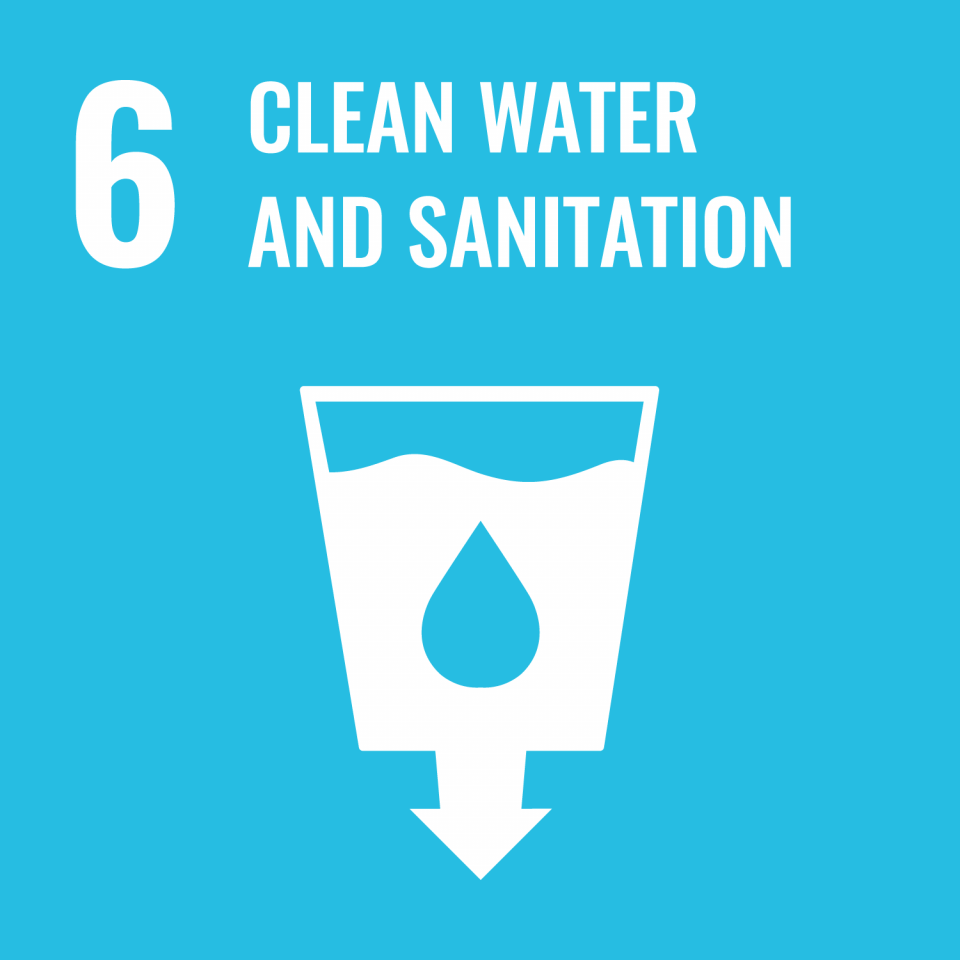
Goal 6: ensure availability and sustainable management of water and sanitation for all.
Target 6.1: Safe and affordable drinking water. UN definition: ‘By 2030, achieve universal and equitable access to safe and affordable drinking water for all.’
Research timeline
2008–2009
Bench-top TLF and humic-like fluorescence (HLF) were explored as tracers for microbial contamination, a proxy for dissolved organic carbon in groundwater6 and tracer of surface water-groundwater interactions7.
This early work paved the way for the sensor research and was funded by BGS National Capability funds.
2015
Following the commercial availability of portable TLF fluorimeters, the BGS investigated their potential as portable, real-time predictors of faecal indicator organisms (FIOs) on an UPGro Catalyst Grant.
TLF was shown to be a predictor of both the presence of FIOs and their enumeration that is superior to other commonly measured water quality parameters in Zambia and early evidence was found that TLF is a more precautionary indicator of faecal contamination8.
In the same study area, TLF was also shown to be elevated in the presence of enteric pathogens detected via molecular methods9.
2016
TLF was shown to be significantly related to the presence and number of FIOs in groundwater in rural India, as well as significantly related to the distance to onsite sanitation10. There was also the suggestion that TLF is predominantly extracellular in groundwater.
This work was funded by the non-governmental organisation (NGO) Water For People.
2017
The BGS collaborated with the University of Manchester to investigate TLF-FIO relationships in sedimentary groundwater sources in Myanmar.
2018
Together with the University of New South Wales, Australia, all available paired TLF-FIO data (n = 564) was collated to validate the technique in groundwater and surface water in India, Malawi, South Africa and Zambia.
TLF was strongly related to the presence of FIOs and their number (ρ = 0.80)11. A TLF threshold of 1.3 ppb to indicate FIOs, with associated error rates, and a limit of detection of 10 cfu/100mL were proposed.
The work was funded by BGS NC-ODA.
BGS has also highlighted the potential of online TLF to the UK water industry through a NERC-funded study where TLF was strongly correlated with E. coli in public water supplies12.
2019
Collaboration with the University of Oxford, under the UPGro project Gro for GooD, demonstrated TLF has negligible method-induced variability, unlike bacteriological analyses13.
Collaboration with industrial partners to successfully design and produce a lower-cost fluorimeter prototype (USD$3000) that demonstrated comparable performance in the field to the current state-of-the-art. This was funded by Innovate UK.
2020
A study in Kenya, Malawi, Senegal and Uganda indicated that TLF is predominantly associated with extracellular material14. This was funded by AfriWatSan project, HyCRISTAL and BGS NC-ODA.
In the highly contaminated aquifer beneath Dakar, Senegal, TLF was associated with dissolved organic carbon, total bacterial abundance and other indicators of faecal contamination, but not FIOs15. This was funded by AfriWatSan project and BGS NC-ODA.
The first large-scale study in Malawi (n = 183)16 confirmed that TLF was able to distinguish between water sources containing less than 10 and greater than 10 cfu/100mL FIOs. It also highlighted potential HLF interference and the suitability of TLF for high-level screening in snapshot surveys. This was funded by the UPGro project Hidden Crisis and the REACH programme.
The first high-frequency TLF-FIO seasonal dataset in Africa showed TLF as a more stable and precautionary indicator of microbial risk than FIOs17. This was funded by the UPGro project Hidden Crisis and the REACH programme.
Projects, programmes and funders
Projects
Programmes
Funders
References
1. WHO. 2019. Drinking water. https://www.who.int/news-room/fact-sheets/detail/drinking-water.
2. Prüss‐Ustün, A, et al. 2014. Burden of disease from inadequate water, sanitation and hygiene in low‐and middle‐income settings: a retrospective analysis of data from 145 countries. Tropical Medicine and International Health, Vol. 19(8), 894–905. DOI: https://doi.org/10.1111/tmi.12329
3. WHO/UNICEF. 2013. Ending Preventable Child Deaths from Pneumonia and Diarrhoea by 2025: the integrated Global Action Plan for Pneumonia and Diarrhoea (GAPPD). (Switzerland: WHO Press.) https://www.who.int/publications/i/item/9789241505239
4. Lapworth, D J, et al. 2020. Drinking water quality from rural handpump-boreholes in Africa. Environmental Research Letters, Vol. 15, Article 064020. https://doi.org/10.1088/1748-9326/ab8031
5. MacDonald, A M, et al. 2019. Groundwater and resilience to drought in the Ethiopian highlands. Environmental Research Letters, Vol. 14, Article 095003. https://doi.org/10.1088/1748-9326/ab282f
6. Lapworth, D J, et al. 2008. Tracing groundwater flow and sources of organic carbon in sandstone aquifers using fluorescence properties of dissolved organic matter (DOM). Applied Geochemistry, Vol. 23(12), 3384–3390. https://doi.org/10.1016/j.apgeochem.2008.07.011
7. Lapworth, D J, et al. 2009. Understanding groundwater, surface water, and hyporheic zone biogeochemical processes in a Chalk catchment using fluorescence properties of dissolved and colloidal organic matter. Journal of Geophysical Research: Biogeosciences, Vol. 114(G3). https://doi.org/10.1029/2009JG000921
8. Sorensen, J P R, et al. 2015a. In situ tryptophan-like fluorescence: a real-time indicator of faecal contamination in drinking water supplies. Water Research, Vol. 81, 38–46. https://doi.org/10.1016/j.watres.2015.05.035
9. Sorensen, J P R, et al. 2015b. Tracing enteric pathogen contamination in sub-Saharan African groundwater. Science of the Total Environment, Vol. 538, 888–895. https://doi.org/10.1016/j.scitotenv.2015.08.119
10. Sorensen, J P R, et al. 2016. Are sanitation interventions a threat to drinking water supplies in rural India? An application of tryptophan-like fluorescence. Water Research, Vol. 88, 923–932. https://doi.org/10.1016/j.watres.2015.11.006
11. Sorensen, J P, et al. 2018a. Real-time detection of faecally contaminated drinking water with tryptophan-like fluorescence: defining threshold values. Science of the Total Environment, Vol. 622, 1250–1257. https://doi.org/10.1016/j.scitotenv.2017.11.162
12. Sorensen, J P R, et al. 2018b. Online fluorescence spectroscopy for the real-time evaluation of the microbial quality of drinking water. Water Research, Vol. 137, 301–309. https://doi.org/10.1016/j.watres.2018.03.001
13. Nowicki, S, et al. 2019. Tryptophan-like fluorescence as a measure of microbial contamination risk in groundwater. Science of the Total Environment, Vol. 646, 782–791. https://doi.org/10.1016/j.scitotenv.2018.07.274
14. Sorensen, J P R, et al. 2020. Tryptophan-like and humic-like fluorophores are extracellular in groundwater: implications as real-time faecal indicators. Scientific Reports, Vol. 10, 15379. https://doi.org/10.1038/s41598-020-72258-2
15. Sorensen, J P, et al. 2020. In situ fluorescence spectroscopy indicates total bacterial abundance and dissolved organic carbon. Science of the Total Environment, Vol. 738, 139419. https://doi.org/10.1016/j.scitotenv.2020.139419
16. Ward, J S, et al. 2020a. Large-scale survey of seasonal drinking water quality in Malawi using in situ tryptophan-like fluorescence and conventional water quality indicators. Science of the Total Environment, Vol. 744, 140674. https://doi.org/10.1016/j.scitotenv.2020.140674
17. Ward, J S, et al. 2020b. Tryptophan-like fluorescence as a high-level screening tool for detecting microbial contamination in drinking water. Science of the Total Environment, Vol. 750, 141284. https://doi.org/10.1016/j.scitotenv.2020.141284
Contact
For further information on TLF and other BGS fluorescence work please contact Dan Lapworth or James Sorensen.
About the authors

Dr James Sorensen
Senior hydrogeologist



